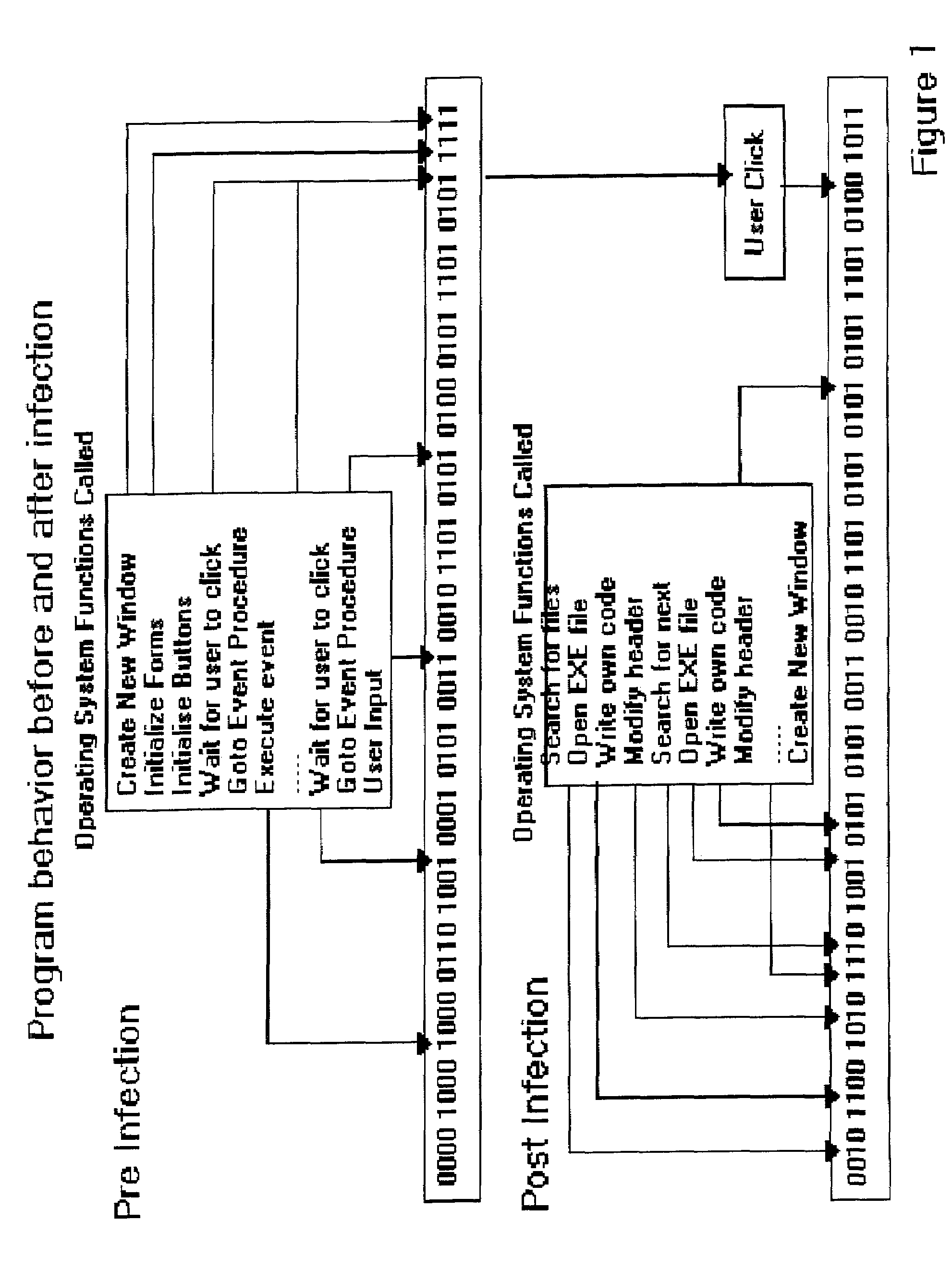Computer immune system and method for detecting unwanted code in a P-code or partially compiled native-code program executing within a virtual machine
a computer and immune system technology, applied in the field of computer security, can solve the problems of significant inconvenience for computer users, e-mail mediated attacks, and service problems and loss of e-mail capability, and achieve the effect of adequately preventing file exchange or e-mail mediated infections
- Summary
- Abstract
- Description
- Claims
- Application Information
AI Technical Summary
Benefits of technology
Problems solved by technology
Method used
Image
Examples
Embodiment Construction
[0014]An aspect of the present invention provides a method for identifying the presence of malicious code in program code within a computer system. The method includes initializing an analytical virtual P-code engine (AVPE) within the computer system. P-code is virtual machine code, whereby a run-time engine is required to interpret the P-code for execution. The run-time engine translates each P-code to one or more instructions in machine code. The AVPE comprises software simulating functionality of a P-code interpreter and exposes a set of library routines for N-code compiled programs, where a virtual central processing unit and virtual memory perform the actual processing. A target program is virtually executed within the AVPE so that the target program interacts with the computer system only through the AVPE and the virtual central processing unit. The behavior of the target program is analyzed following virtual execution to identify occurrence of malicious code behavior and indi...
PUM
 Login to View More
Login to View More Abstract
Description
Claims
Application Information
 Login to View More
Login to View More - R&D
- Intellectual Property
- Life Sciences
- Materials
- Tech Scout
- Unparalleled Data Quality
- Higher Quality Content
- 60% Fewer Hallucinations
Browse by: Latest US Patents, China's latest patents, Technical Efficacy Thesaurus, Application Domain, Technology Topic, Popular Technical Reports.
© 2025 PatSnap. All rights reserved.Legal|Privacy policy|Modern Slavery Act Transparency Statement|Sitemap|About US| Contact US: help@patsnap.com



